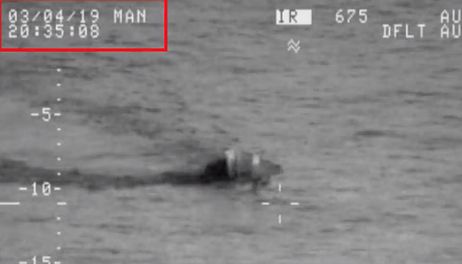SOURCE: AFI


In a recent exchange on X (formerly Twitter), former Indian Navy Chief Admiral Arun Prakash and Vice Admiral Arun Kumar Singh have voiced their skepticism over claims made by Pakistan regarding a 2019 naval encounter. In March 2019, the Pakistan Navy claimed to have “detected and blocked” an Indian Navy submarine from entering Pakistani territorial waters. According to a Pakistani Naval P-3 pilot’s description, the submarine’s periscope was allegedly detected at a distance of 70 nautical miles, after which the submarine was “locked on” for an hour and 40 minutes. For this action, the officer was awarded the Tamgha-e-Basalat for “courage and valor.”
Vice Admiral Arun Kumar Singh, reacting to these claims, expressed disbelief at the Pakistani account. Drawing from his extensive experience commanding submarines and warships, Singh questioned the feasibility of detecting a submarine periscope at such a great distance. He stated, “A P-3 detecting a sub periscope at 70 nm and then locking on the sub for 100 minutes? Having personally commanded subs and warships, I wonder what he really detected and locked on to.” His comments reflect a deep skepticism about the technical plausibility of the Pakistani claims.
Indian defense analysts have echoed this skepticism, arguing that it is highly unlikely for a submarine periscope to be detected at such a range. One analyst remarked, “There is no way they detected the periscope at 70 nm. Must have detected it again at 7 nm. Pakistanis always lie. Their stuff shouldn’t be taken at face value.” The general consensus among Indian defense experts seems to be that the claims are exaggerated and intended more for public relations than an accurate recounting of events.
Admiral Arun Prakash also weighed in on the matter, providing a detailed explanation of how submarines operate when under threat. He argued that if the Pakistani P-3 aircraft had indeed detected the submarine on radar, the submarine’s Electronic Warfare (EW) systems would have simultaneously picked up the radar transmission. This would have prompted the submarine to execute a “crash dive” and enter a “silent regime” within minutes to avoid further detection. Prakash further suggested that perhaps the Tactical Coordinator or Sonic Operator on the Pakistani aircraft could provide a more realistic explanation of how the submarine was “locked on” for such a prolonged period. However, he implied that the entire episode was more about creating a narrative than presenting factual evidence.
The incident in question occurred at a time of heightened tensions between India and Pakistan, following the Pulwama attack in February 2019 and the subsequent Balakot airstrike by the Indian Air Force. The alleged detection of an Indian submarine was presented by Pakistan as a significant defensive maneuver, showcasing their naval capabilities. However, the doubts raised by seasoned Indian naval officers and defense analysts highlight the complexities and the often ambiguous nature of such military encounters.